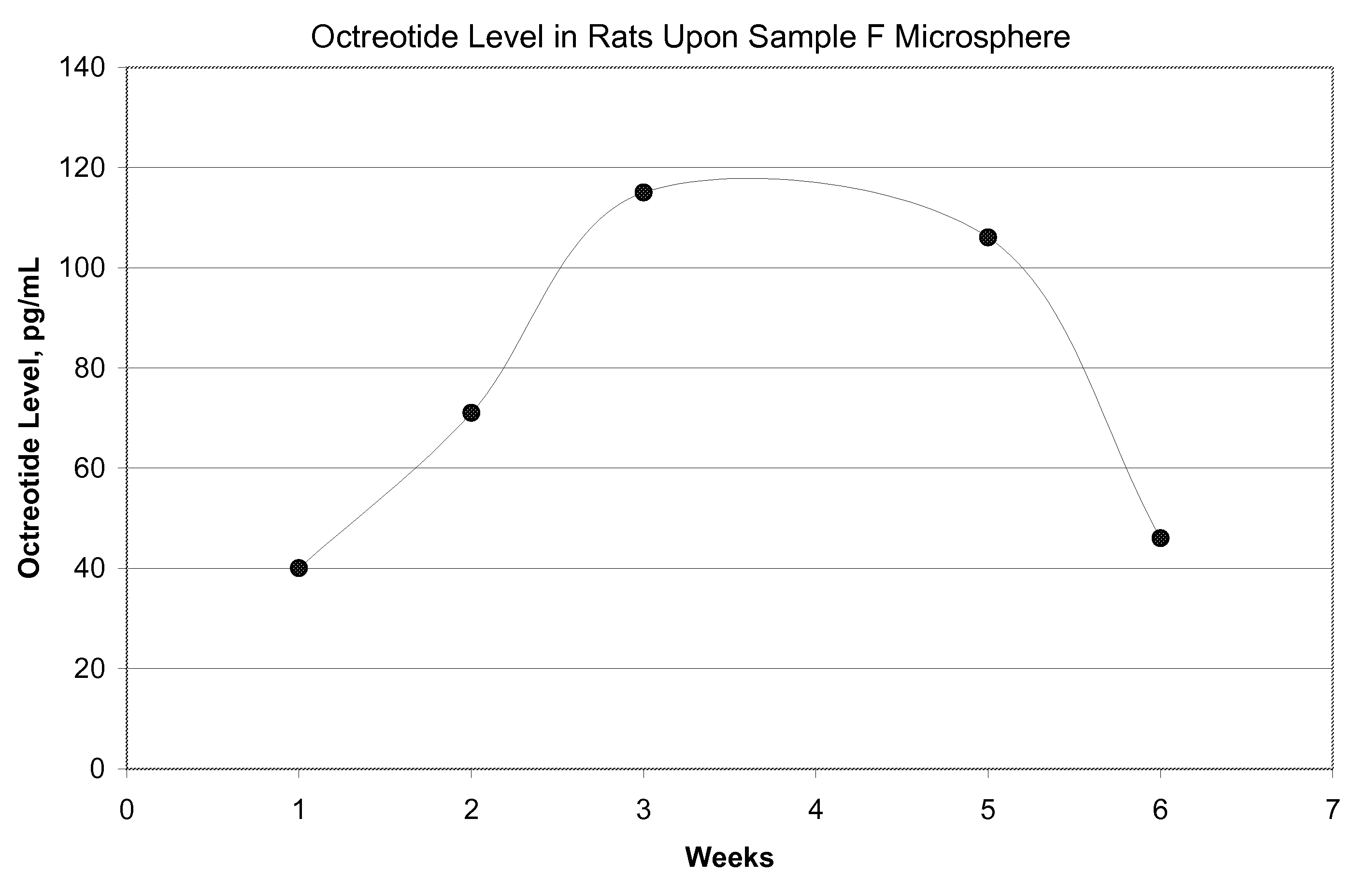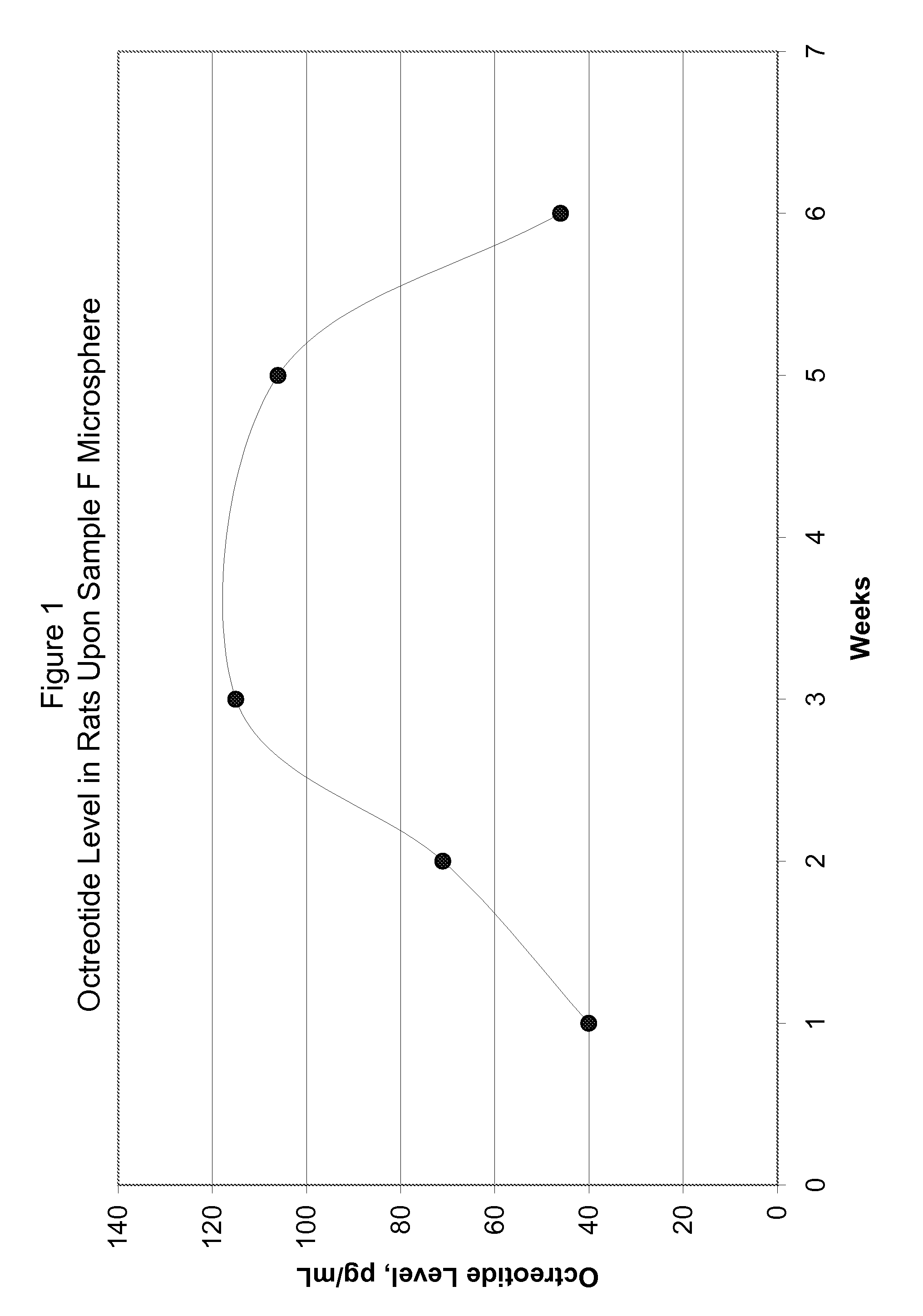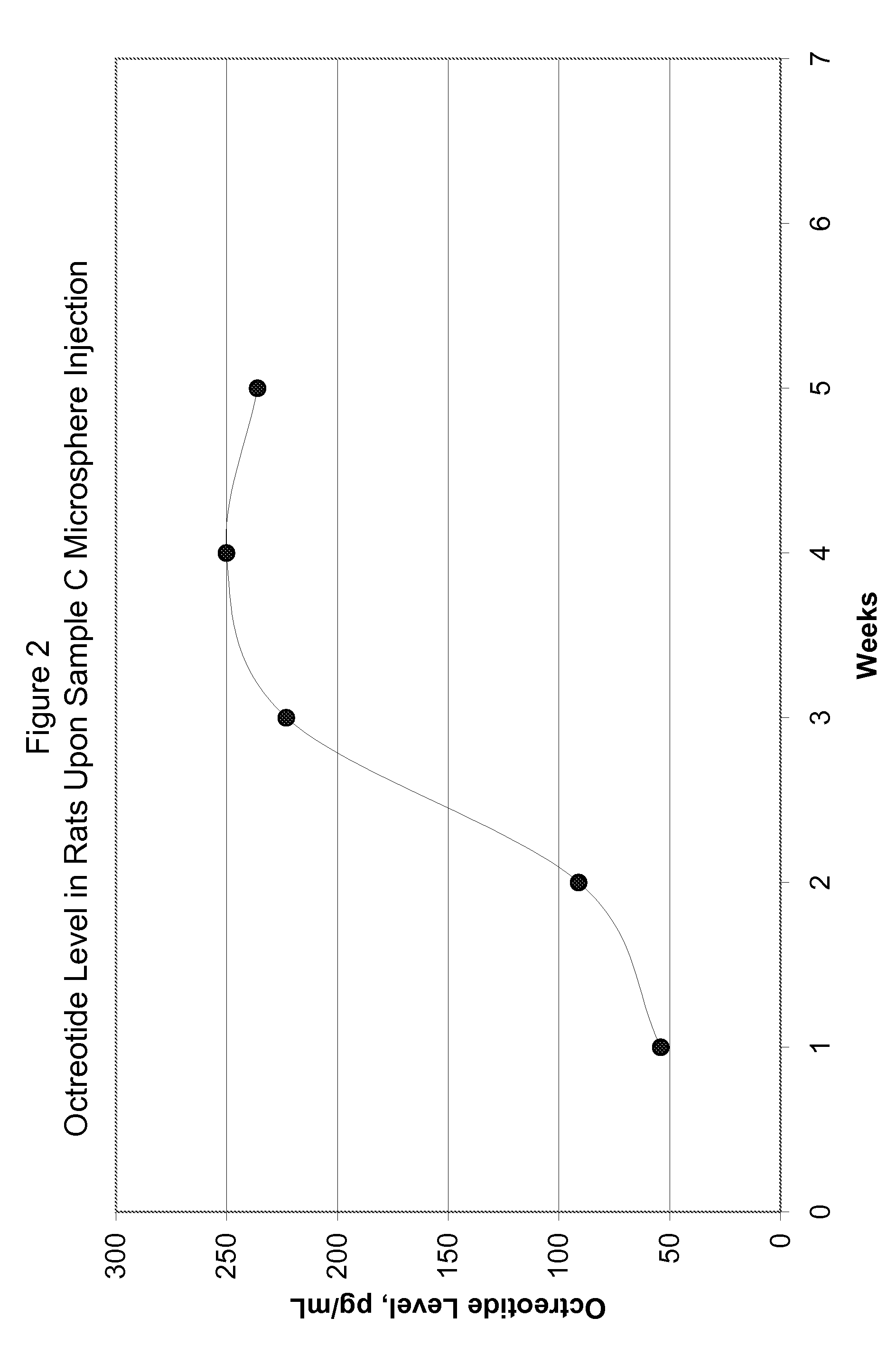Microspheres for releasing an octreotide compound without an initial time lag
a microsphere and octreotide technology, applied in the direction of drug compositions, peptide/protein ingredients, metabolic disorders, etc., can solve the problems of excessive pain at the injection site, sandostatin lar took more than 8 days to achieve more than 3 ng/ml concentration for the same dose, and the administration dose takes approximately 70 days or more to clear from the system. , to achieve the effect of fast drug clearing, easy re-use, and avoiding
- Summary
- Abstract
- Description
- Claims
- Application Information
AI Technical Summary
Benefits of technology
Problems solved by technology
Method used
Image
Examples
example 1
[0055]Co-Monomer Ratio, Molecular Weight and End Group
[0056]Several microsphere batches were prepared using polymers having lactide content varying from 50% (PLGA 50:50) to 100% (PLA) and where molecular weight varied from 7,000 to 50,000 daltons. Table 1 shows the polymer details. Table 2 shows the preparation parameters. Table 3 shows the drug release properties under in-vitro and in-vivo conditions.
[0057]The co-monomer ratio and end group of the polymer employed here are those that were certified by the polymer manufacturer. Weight average molecular weight (Mw) of the polymer was determined by size exclusion chromatography (SEC) which is gel permeation chromatography (GPC). Molecular weight was determined by preparing the polymer solution in tetrahydrofuran (THF). Molecular weight separation was performed using Styragel columns from Waters Inc. and two columns HR-4 and HR-2 were used in series. Narrow molecular weight polystyrene standards were used for calibration. The mobile ph...
example 2
[0075]In the next study, two microsphere batches prepared from PLGA 75:25 were evaluated for the drug release study. Table 3 compares the preparation parameters and properties.
TABLE 3Microsphere Batches Prepared from PLGA75:25PLGA 75:25H75:25DL2.5AGHDP CompositionPolymer0.240.20g / gOctreotide0.030.03DCM0.660.70MeOH0.070.07DP ParametersMeOH / DCM0.10.1Target Load1310CP CompositionPVA, g / g0.00350.0035Process parametersMixing speed70006500Solvent removalAir sweep,Air sweep,washwashFinishingRecovery of MSFiltrationFiltrationDrug content in MS (%)10.09.7Drug encap. Efiiciency7781Particle10% under2N.D.Size, Volume50% under14N.D.distribution, Micron90% under32N.D.Bulk density0.440.70% Impurity2.98.0“N.D.” is not determined
[0076]PLGA 75:25H Polymer, Batch (Sample G)
[0077]FIG. 5 shows in-vitro release for the microsphere batches using polymers of Samples G and H. FIG. 6 shows in-vivo release in rats using polymer of Sample G microspheres upon subcutaneous injection at the dose of 1.5 mg octreot...
example 3
[0080]In the next study, microsphere batch Sample I was prepared using PLGA 85:15 (molecular weight: 14,000). Microsphere batch Sample J was prepared from PLA polymer having a molecular weight of 7,000; microspheres Sample K was prepared from PLA polymer having a molecular weight of 14,000. Table 4 compares the preparation parameters and properties of the microsphere batches.
TABLE 4Microsphere Batches Prepared from PLGA 85:15 and PLAPLA85:15DL2A(Mw: 7 KDa)PLA (14 KDa)IJKDP CompositionPolymer0.240.280.23(g / g)Octreotide0.0260.0350.037DCM0.660.610.62MeOH0.080.070.11DP ParametersMeOH / DCM0.120.120.18Target Load101114CP CompositionPVA0.00350.00350.0035(g / g)Process parametersMixing speed650060006000Solvent removalAir sweep / washAir sweep / washAir sweep / washFinishingRecovery of MSFiltrationFiltrationFiltrationDrug content in MS (%)9.19.310.3Drug encap. Efiiciency918574Particle10% under245Size, Volume25% under4810distribution, Micron50% under11141975% under19202690% under242531Bulk density0.59...
PUM
| Property | Measurement | Unit |
|---|---|---|
| inner diameter | aaaaa | aaaaa |
| size | aaaaa | aaaaa |
| concentration | aaaaa | aaaaa |
Abstract
Description
Claims
Application Information
 Login to View More
Login to View More - R&D
- Intellectual Property
- Life Sciences
- Materials
- Tech Scout
- Unparalleled Data Quality
- Higher Quality Content
- 60% Fewer Hallucinations
Browse by: Latest US Patents, China's latest patents, Technical Efficacy Thesaurus, Application Domain, Technology Topic, Popular Technical Reports.
© 2025 PatSnap. All rights reserved.Legal|Privacy policy|Modern Slavery Act Transparency Statement|Sitemap|About US| Contact US: help@patsnap.com



